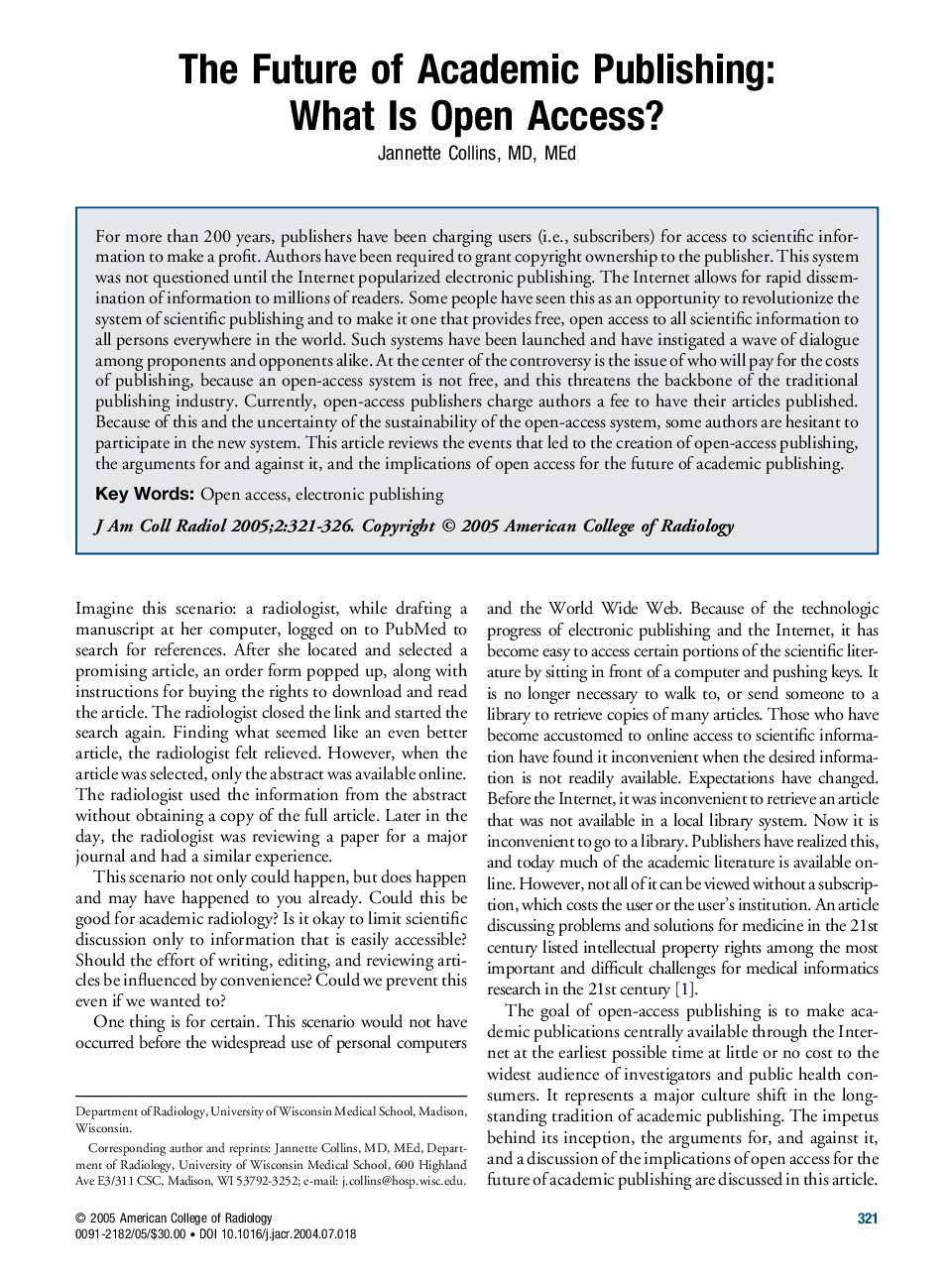| Article ID | Journal | Published Year | Pages | File Type |
|---|---|---|---|---|
| 10099066 | Journal of the American College of Radiology | 2005 | 6 Pages |
Abstract
For more than 200 years, publishers have been charging users (i.e., subscribers) for access to scientific information to make a profit. Authors have been required to grant copyright ownership to the publisher. This system was not questioned until the Internet popularized electronic publishing. The Internet allows for rapid dissemination of information to millions of readers. Some people have seen this as an opportunity to revolutionize the system of scientific publishing and to make it one that provides free, open access to all scientific information to all persons everywhere in the world. Such systems have been launched and have instigated a wave of dialogue among proponents and opponents alike. At the center of the controversy is the issue of who will pay for the costs of publishing, because an open-access system is not free, and this threatens the backbone of the traditional publishing industry. Currently, open-access publishers charge authors a fee to have their articles published. Because of this and the uncertainty of the sustainability of the open-access system, some authors are hesitant to participate in the new system. This article reviews the events that led to the creation of open-access publishing, the arguments for and against it, and the implications of open access for the future of academic publishing.
Keywords
Related Topics
Health Sciences
Medicine and Dentistry
Radiology and Imaging
Authors
Jannette MD, MEd,
